#online marketplaces
Text

In today's digital age, there are countless opportunities to earn money online. Whether you're looking for a side hustle or a full-time job, the Internet has opened up a world of possibilities. Here are 10 legitimate ways to earn money online:
1. Freelancing: If you have a skill such as writing, graphic design, or programming, you can offer your services on freelance platforms such as Fiverr or Up work. Freelancing is a flexible way to earn money online, as you can set your own rates and work on projects that interest you.
2. Affiliate Marketing: Affiliate marketing involves promoting other companies products and earning a commission for every sale you generate. You can promote products through your website, blog, or social media channels. Amazon Associates and Share Sale are two popular affiliate marketing programs.
3. Online Surveys: Companies are always looking for feedback from consumers, and you can get paid for taking online surveys on sites like Survey Junkie or Swag bucks. While you won't get rich from taking surveys, it can be a simple way to earn a bit of extra cash.
4. Selling Products: You can sell products on online marketplaces such as Amazon or Etsy. You can also create your own online store using platforms like Shopify. Whether you're selling handmade crafts or digital products like eBooks, there's a market for almost anything online.
5. Online Tutoring: If you have expertise in a particular subject, you can offer your tutoring services online through platforms like Chegg or Tutor Me. Online tutoring can be a lucrative way to earn money while helping others learn.
6. Blogging: Starting a blog can be a great way to earn money online. You can make money through affiliate marketing, sponsored posts, or by selling digital products such as ebooks or courses. While it takes time and effort to build a successful blog, it can be a fulfilling and profitable endeavor.
7. Virtual Assistant: Many businesses and entrepreneurs need help with administrative tasks, such as email management, social media scheduling, and bookkeeping. As a virtual assistant, you can provide these services remotely and earn a steady income.
8. Online Coaching: If you have expertise in a particular area, such as fitness, nutrition, or business, you can offer coaching services online. Platforms like Coach.me or Udemy can help you get started.
9. YouTube: If you have a knack for creating video content, you can earn money through YouTube. You can monetize your videos through ads or by partnering with brands for sponsored content.
10. Stock Trading: While it's not for everyone, stock trading can be a profitable way to earn money online. With platforms like Robin Hood or E*TRADE, you can easily buy and sell stocks from your computer or mobile device.
In conclusion, there are many legitimate ways to earn money online. Whether you're looking to supplement your income or start a full-time business, the Internet provides a wealth of opportunities. It's important to remember that success often requires hard work and persistence, but with the right approach, earning money online can be a realistic goal.
#freelancing#affiliate marketing#online surveys#selling products#online tutoring#blogging#virtual assistant#online coaching#YouTube#stock trading#legitimate ways to earn money online#side hustle#full-time job#digital age#online marketplaces#Amazon#Etsy#Shopify#Chegg#Tutor Me#Coach.me#Udemy#Robin Hood#E*TRADE#hard work#persistence.
2 notes
·
View notes
Text
How To Get An Allergy Test Done Without Going Anywhere
According to your specific allergies, allergy testing enables you and your doctor to create a treatment plan jointly. Your skin is exposed to various allergens during the allergy test, and you are watched for any reaction symptoms.
If you have several allergies and need help determining which ones cause the most severe reactions, or if you have several allergies, allergy testing can be beneficial. If you or a loved one should undergo allergy testing, discussing the matter with your doctor can help.
What Are Skin Tests For Allergies?
Skin tests to identify allergies are helpful. The 10 to 50 specific substances, or allergens, that children and adults experience allergic reactions to can be found using allergy skin testing. Common allergens include foods, latex, medicines, insect stings, and environmental substances, including dust, pollen, and mold.
An allergist will analyze your allergy skin test results in light of your medical background, physical examination, and other tests. The specialized knowledge and experience required to interpret allergy skin test results are held by an allergist, also known as an allergist-immunologist.
Why are skin tests for allergies performed?
The following types of allergens may produce allergy symptoms, and your doctor may advise allergy skin testing to identify the source of the symptoms:
Environmental allergens such as tree pollen, dust mites, mold, or pet dander
peanuts, milk, wheat, and eggs are among the food allergies.
Venomous insects
Penicillin and latex-related medications
Allergic Reaction Testing Risks
Swollen, red, itchy bumps that can last several hours to several days, depending on how severely you were allergic to the substance, are typical adverse reactions to allergy testing. Very rarely, allergy skin tests will cause an immediate, severe allergic reaction. Still, because it is possible, it is strongly advised that any skin allergy testing be carried out in a location with access to first aid supplies and medication.
You can use business listing website you can use to find the healthcare professionals near you to collect the blood sample.
How to Prepare for an Allergy Test?
Your doctor will inquire about your medical history, present allergy management, and symptoms before the test. If allergies run in your family, you should let your physician know. As a further precaution, your doctor will also examine you. A list of all your current prescription and over-the-counter medications is essential. Inaccurate results from your allergy testing or a higher risk of having a severe reaction are possible effects of some medicines that can affect your allergy testing. Up to 10 days before the test, your doctor may advise you to cease taking a particular drug. These may include both prescription and over-the-counter antihistamines and medications for heartburn, depression, and asthma.
What procedures are used for allergy skin testing?
You will have your allergy skin testing done in a clinic or doctor's office. A skin test detects 10–50 allergens by pricking, puncturing, or scratching. These steps are typically involved:
You are questioned about your allergy symptoms as part of your doctor's medical history and physical examination.
For assistance in identifying the most likely allergens, you can keep an allergy journal. In a log, you can note your symptoms' onset and duration and their timing about your activities and the medications you took.
If your doctor tells you you have food allergies, you might try an elimination diet. Foods are cut out one at a time on this diet to determine which ones might be causing symptoms. Your doctor will look at the above steps to determine if you are good for allergy skin testing.
The risk of a severe reaction, like anaphylaxis or an asthma attack, won't be increased by allergy skin testing, according to your doctor.
The allergens will be rubbed onto the surface of your skin by your doctor or nurse with a very slight prick or scratch. Adults typically experience this on their forearms. Children usually have a back site. This procedure takes between five and ten minutes.
After a few minutes to twenty, your doctor will inspect your skin. If a tiny red lump emerges at any allergy prick or scratch locations on your skin, you might be allergic to that specific allergen.
Your medical history, physical exam, and any other tests will be considered as your doctor interprets the test results.
If the results of your skin test by pricking, poking, or scratching are average or unclear, your doctor might advise an intradermal test. These actions typically accompany an intradermal test:
Your physician or nurse will use a tiny needle to inject a diluted allergen beneath the skin on your arm or forearm. Several allergens can be tested concurrently by your doctor.
After a few minutes to twenty, your doctor will inspect your skin. If a tiny red lump appears at any of the allergen on your skin, you may be allergic to that allergen.
Your medical history, physical exam, and other tests will be considered as your doctor interprets the test results.
Conclusion
The doctor will make a treatment recommendation based on test results, which may involve medication, immunotherapy, changes to your living or working environment, or dietary modifications. Getting tested for allergies enables you to regain control over your life and allergies. You can directly can healthcare professionals using online marketplace app to collect your blood sample.
2 notes
·
View notes
Text
Engagement Over Reach: Why Micro-Influencers Drive Results for Online Marketplaces

The influencer marketing landscape is no longer dominated by celebrities and mega-influencers. Today, brands are turning to a new breed of advocate: micro-influencers. These individuals, boasting engaged communities of thousands (sometimes even hundreds) of followers, are making waves in the marketing world. But for online marketplaces and digital marketing agencies, navigating the vast pool of micro-influencers can be daunting. Here’s a guide to help you find the perfect micro-influencer squad for your brand:
1. Define Your Goals and Target Audience
Before diving headfirst into online marketplaces, take a step back. What are your marketing goals? Do you want to increase brand awareness, drive sales, or generate user-generated content (UGC)? Once you have a clear understanding of your objectives, define your target audience. Knowing their demographics, interests, and online behavior is crucial for finding the right micro-influencers.
2. Leverage the Power of Online Marketplaces
Online marketplaces act as a bridge between brands and micro-influencers. Utilize the search filters to find micro-influencers who align with your target audience and niche. Look for metrics like follower demographics, engagement rate, and content style. Many platforms offer features like campaign management tools and performance analytics, streamlining the process.
3. Authenticity Over Vanity Metrics
Don’t be fooled by follower count alone. Look for micro-influencers who create authentic content that resonates with their audience. High engagement rates, like comments and shares, indicate a genuine connection. Prioritize micro-influencers whose content aligns with your brand voice and values.
4. Building Relationships, Not Transactions
Micro-influencers are often passionate individuals with a strong connection to their followers. Treat them as partners, not simply promotional tools. Develop genuine relationships by engaging with their content, providing clear campaign guidelines, and offering fair compensation.

Digital marketing agencies can be invaluable assets in finding and managing your micro-influencer squad. Their expertise lies in:
Understanding your target audience and brand goals
Identifying the right online marketplaces for your niche
Vetting micro-influencers based on audience demographics and engagement
Developing creative campaign concepts that resonate with both the micro-influencer and their audience
Managing communication, contracts, and campaign logistics
Tracking campaign performance and providing valuable data insights
Conclusion
Micro-influencers offer a powerful and cost-effective way to reach targeted audiences and build brand loyalty. You can assemble the perfect micro-influencer squad to achieve your marketing goals by leveraging online marketplaces and partnering with a digital marketing agency. Remember, success lies in building genuine relationships, focusing on authenticity, and measuring campaign results. So, are you ready to find your micro-influencer squad and take your brand to the next level?
0 notes
Text
Comic Buying Center vs. Online Marketplaces: Pros and Cons
Comic Buying Centers have unique and valuable comics for comic book enthusiasts and sellers, setting them apart from online marketplaces. We’ll compare the benefits and drawbacks of each, with a focus on why choosing a comicbuyingcenter.com might be the better option for you.
Pros and cons of Comic Buying Centers
Pros:
Personal Interaction and Expert Appraisal. At a Comic Buying Center, you can…

View On WordPress
0 notes
Text
In the bustling world of e-commerce, online arbitrage software is a game-changer. It's a powerful ally for those looking to capitalize on the price differences between online marketplaces. Here's how it can benefit your business.
#online arbitrage software#business#ecommerce#online arbitrage software benefits#online marketplaces
0 notes
Text
How to Make $20 to $50 Every Day Online, Offline, Or at Home — No Matter Where You Are!
To make $20 to $50 daily, consider online freelancing or local gigs. Explore platforms like Upwork for remote work or offer services in your community.
Earning extra income has never been more accessible thanks to the digital age and the gig economy. Whether you’re aiming to boost your savings, pay down debt, or simply enjoy a little extra cash, numerous opportunities await. Leveraging your skills can lead to consistent online earnings, from freelance writing and graphic design to virtual assistance and social media management.
Offline, your options vary from dog-walking and babysitting to participating in research studies or selling items at local markets. Home-based avenues to consider include crafting, drops hipping, or starting a niche blog. With the right approach and a bit of hustle, reaching that $20 to $50 every day target is an achievable goal for anyone, anywhere.
My Best Recommended & Proven Way to Make $100 Daily — Watch THIS Video FREE Training to START >>
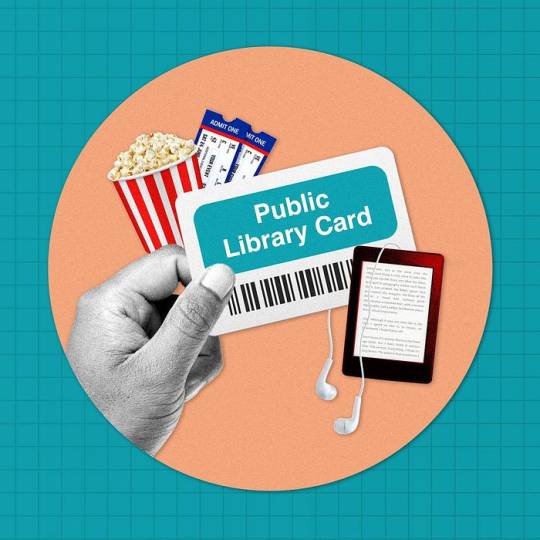
Credit: www.wsj.com
Introduction To Everyday Earning
Are you looking to boost your daily income with some extra cash? An extra $20 to $50 per day can add up quickly over time. It can help with bills, savings, or that little treat you’ve been eyeing. This guide unlocks the secrets of earning every day, no matter where you are — online, offline, or from the comfort of your home. Let’s dive into the world of everyday earning, turning your extra time into dollars!
Why Small Daily Profits Matter
Earning small amounts daily makes a big impact over time. Consistency is key. With as little as $20 a day, you could see an extra $600 in your pocket by month’s end. Let’s quantify why these daily earnings are significant:
Reliable cash flow: Daily earnings provide a steady income stream.
Financial security: Regular profits can reduce financial stress.
Goal achievement: Small steps lead to big goals, like a vacation or new gadget.
Diverse Opportunities To Earn $20-$50 Daily
Variety is the spice of life — and earning! There are countless ways to make $20 to $50 daily. Explore your skills, hobbies, and interests for the perfect fit. Here’s a snapshot of different opportunities:
Online EarningOffline EarningEarning at HomeFreelance WritingLocal Tour GuidePet SittingOnline SurveysHandyman ServicesCrafting and SellingVirtual AssistanceBabysittingHome Baking
Choose what matches your interests and start earning. With commitment, earning daily is simple. Embrace the journey of growing your income, one day at a time!
Leveraging The Online Marketplace
The online marketplace is a bustling digital environment where anyone can earn money. With a variety of platforms and niches, the possibility of making an extra $20 to $50 every day is within reach. Whether you excel in a specific skill or have products to sell, the internet provides countless opportunities to turn your resources into revenue. Let’s explore some effective ways to make money online.
Freelancing For Quick Gigs
Quick gigs can be a fast track to daily cash. Sites like Upwork and Fiverr offer tasks tailored to your talents. Follow these steps:
Create a profile highlighting your skills.
Browse job listings related to your abilities.
Apply for gigs you can complete swiftly.
Deliver quality work on time to build your reputation.
Skills in high demand include writing, graphic design, web development, and more. By focusing on quality and reliability, you build long-term relationships with clients, ensuring a steady flow of tasks and income.
Selling Products On E-commerce Sites
Selling products online opens doors to a global audience. Take these steps to start:
Choose a niche: Find products you are passionate about.
Find a platform: Use popular sites like eBay, Etsy, or Amazon.
Set up a seller account: Follow site guidelines for setup.
List items: Take clear photos and write honest descriptions.
Be price-savvy: Set competitive prices to attract buyers.
Manage inventory: Keep track of stock and update listings.
Consistency in listing new items and customer service are key to success. With persistence, your ecommerce venture can turn into a reliable source of daily income.
My Best Recommended & Proven Way to Make $100 Daily — Watch THIS Video FREE Training to START >>
Exploring Remote Work Options
The digital era unlocks a treasure chest of earning opportunities. It doesn’t matter if you’re lounging at home, sipping coffee in a local cafe, or traveling the world; making $20 to $50 daily is within reach through remote work. Let’s dive into virtual assistance and online tutoring, two lucrative paths that don’t chain you to a specific location.
Virtual Assistance Jobs
Imagine earning from the comfort of your living room. Virtual assistance jobs offer this luxury. With tasks ranging from managing emails to scheduling appointments, these roles cater to diverse skill sets. Below is how you can step into the world of virtual assistance:
Identify your strengths. Are you good with planning or writing? Match skills to services.
Build a sharp resume. Highlight relevant experience to stand out.
Explore job platforms. Sites like Upwork and Freelancer list numerous virtual assistant gigs.
The table below shows basic rates for various virtual assistance tasks:
Task TypeBasic Rate Per HourEmail Management$15-$25Content Creation$20-$30Appointment Scheduling$10-$20
Online Tutoring And Lessons
Share your knowledge and make money with online tutoring. Teach a language, offer math help, or provide music lessons; each session can boost your daily income.
Choose your niche. Pick a subject you excel in.
Gather resources. Prepare lesson plans and materials.
Find the right platforms. Websites like Tutor.com and VIPKid connect tutors to students.
Below are examples of topics you can tutor online with estimated hourly earnings:

Credit: gatheringdreams.com
Passive Income Streams
Think money while you sleep: that’s passive income. Extra cash flows in without clocking in hours. Perfect for everyone. Escape the 9-to-5 grind. Secure your financial future with smart passive income strategies. Turn downtime into dollars. Ready for some exciting ways to earn?
Investing In Stocks Or Cryptocurrency
Starting in stocks or crypto is a way to make your money work for you. You buy shares in businesses or digital currency. Over time, these can grow in value. Picking the right ones could mean a steady stream of income. Remember, there’s risk. Always learn before you dive in.
Steps to begin:
Choose a platform: Pick a user-friendly investing app.
Research: Understand what makes stocks or crypto valuable.
Invest Slowly: Start with a small amount you’re ok losing.
Earning Through Affiliate Marketing
Make money by promoting products online. Join affiliate programs. Share links on your blog, social media, or website. When someone buys through your link, you get a commission. It’s like being a salesperson, but online and on your own time.
Steps to become an affiliate marketer:
Find a niche: Pick products you’re excited about.
Choose programs: Look for ones with good commissions.
Promote wisely: Use SEO to draw in potential buyers.
My Best Recommended & Proven Way to Make $100 Daily — Watch THIS Video FREE Training to START >>
Monetizing Skills And Talents
Tapping into your own skills and talents can unlock consistent daily earnings. From crafting unique items to sharing your performances online, the opportunities are limitless. Discover how simple it is to convert your hobbies into a steady income stream.
Crafting and Selling Homemade Goods
Crafting And Selling Homemade Goods
Create and sell items from the comfort of your home. Start with materials you love to work with. Here’s a quick guide on how to get started:
Identify your craft: Choose something you excel at, be it knitting, woodworking, or jewelry making.
Quality matters: Make sure each item is made with care and to the highest standard.
Set fair prices: Research the market to ensure your prices are competitive yet profitable.
Choose a platform: Sell through Etsy, eBay, or start your own website.
Promote your work: Use social media and word of mouth to showcase your goods.
Performing and Streaming Online
Performing And Streaming Online
Showcase your talent to a global audience. You can earn through donations, subscriptions, and ads. Here’s how:
Select a streaming platform like Twitch or YouTube.
Create content that stands out and gathers a following.
Engage with your audience to build a community.
Monetize through platform-specific features, sponsors, or merchandise sales.
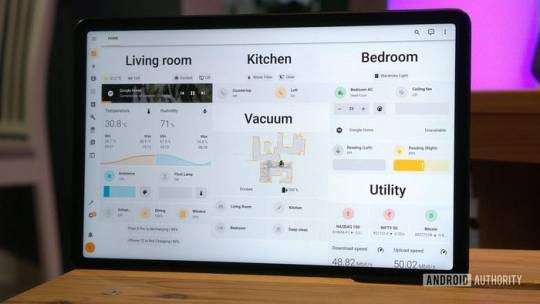
Credit: www.androidauthority.com
Maximizing Offline Income Opportunities
Earning outside the digital world is still vibrant. With a bit of creativity and effort, there’s money to be made. Here are some tried-and-true methods to pocket an extra $20 to $50 daily, whether you’re at home or out in your local community.
Local Service Offerings
Offering your skills locally can lead to consistent cash flow. Explore these popular services:
Lawn care: Mow lawns or provide landscaping services.
Babysitting: Help busy parents with childcare.
Pet sitting: Look after pets while owners are away.
Handyman services: Complete home repairs and simple renovations.
Create flyers or use local online boards to advertise. Word of mouth also goes a long way to secure gigs.
Participating In Focus Groups And Surveys
Research companies pay for your opinions. Focus groups and surveys are simple ways to earn:
Find local marketing research companies.
Sign up for upcoming studies that interest you.
Provide honest feedback and earn for your time.
Payments vary by study. Still, they offer fair compensation for your thoughts. Check local bulletin boards or community websites for opportunities.
Home-based Income Ventures
Earning from the comfort of your home has never been easier. From using space you already have to tapping into your gardening skills, opportunities abound. Whether you’re looking for a side hustle or a steady income stream, explore these home-based ventures. Let’s transform your living space into a money-making haven.
Starting A Home Garden For Profit
Turn your green thumb into greenbacks. Home gardening offers a wholesome way to earn. You sell fresh produce right from your backyard. Begin with easy-to-grow vegetables and herbs. Think about tomatoes, peppers, basil, and cilantro. Use organic methods to appeal to health-conscious buyers. Place ads on local online boards. Connect with neighborhood markets. They love stocking local goods. Here’s how to start:
Choose plants that thrive in your climate.
Start small to manage your garden easily.
Use social media to market your produce.
Offer bundles for a better value.
Renting Out Space Or Items
Your home is an asset — make it work for you. Unoccupied rooms? Idle tools or equipment? Rent them out. Platforms like Airbnb make space rental seamless. Offer a clean, furnished room for travelers. Parking spots are also in high demand in urban areas. Extra income comes from things you rarely use. Think power tools, outdoor gear, or even fancy dresses. Here’s a quick guide to get started:
Item/SpacePlatformTips for SuccessRoom or HomeAirbnb, VRBOProvide clear, quality photos and detailed descriptions.Parking SpaceJustPark, ParkleeHighlight security features and accessibility.Equipment or ToolsFat Llama, PeerRentersSet competitive prices and maintain your items well.
Remember to be clear about rental terms and conditions. Keep communication open with renters. Good reviews boost future business.
Frequently Asked Questions FAQ’s
Q. Can I Make Money Online Daily?
Yes, numerous online platforms offer tasks or services that can pay daily, such as freelance gigs, surveys, and content creation.
Q. What Are Simple Ways To Earn Money At Home?
Consider selling products online, doing remote freelancing, participating in paid surveys, or virtual tutoring as easy methods to earn from home.
Q. Are There Quick Tasks For Instant Cash Offline?
Absolutely, quick offline tasks might include dog walking, babysitting, or helping with moving, which often pay immediately after the service.
Q. How To Generate $50 With Minimal Skills?
Even with basic skills, you can make $50 a day by doing entry-level freelance work, performing odd jobs, or joining paid focus groups.
Q. Where To Find Legitimate Online Earning Sites?
Legitimate earning sites can be found through trusted job boards, freelance platforms, and reviews from reputable financial advice websites.
Q. What Passive Income Options Need Low Investment?
Creating digital products, starting a blog with affiliate marketing, or investing in dividend-paying stocks could offer passive income with minimal initial investment.
Conclusion
Embracing these strategies can lead to daily earnings between $20 and $50. Whether at home or on-the-go, these tips provide flexible options to increase your income. Take action, apply the methods, and start earning extra cash every day. It’s time to boost your financial journey and enjoy the rewards of persistence and creativity.
My Best Recommended & Proven Way to Make $100 Daily — Watch THIS Video FREE Training to START >>
Thanks for reading my article on How to Make $20 to $50 Every Day Online, Offline, Or at Home — No Matter Where You Are!
Affiliate Disclaimer :
This article Contain may be affiliate links, which means I receive a small commission at NO ADDITIONAL cost to you if you decide to purchase something. While we receive affiliate compensation for reviews / promotions on this article, we always offer honest opinions, users experiences and real views related to the product or service itself. Our goal is to help readers make the best purchasing decisions, however, the testimonies and opinions expressed are ours only. As always you should do your own thoughts to verify any claims, results and stats before making any kind of purchase. Clicking links or purchasing products recommended in this article may generate income for this product from affiliate commissions and you should assume we are compensated for any purchases you make. We review products and services you might find interesting. If you purchase them, we might get a share of the commission from the sale from our partners. This does not drive our decision as to whether or not a product is featured or recommended.
Source : How to Make $20 to $50 Every Day Online, Offline, Or at Home — No Matter Where You Are
#Make money online#Earn cash at home#Side hustle ideas#Passive income strategies#Work from home opportunities#Freelancing gigs#Online surveys for money#Money-making tips#Small business ideas#Extra income sources#Home-based jobs#Ways to earn money#Part-time jobs#Entrepreneurial ventures#Online marketplaces#Remote work options#Gig economy platforms#Money-making hacks#Financial independence tactics#Creative ways to make money#Income generation techniques#Cash flow solutions#Profitable ventures#Wealth-building methods
1 note
·
View note
Text
One Channel Admin - Five Star Shopping Haven Exploring Top
Online marketplaces have revolutionized the world of e-commerce, providing shoppers with a convenient platform to discover, compare, and purchase products and services. By opting for top-rated online marketplaces, customers can enjoy a seamless shopping experience with an extensive range of products, competitive prices, and exceptional customer support. This blog explores some of the best marketplace online shopping destinations, including local and global options, for an unparalleled shopping experience.
What is an Online Marketplace?
An online marketplace is a digital platform that connects buyers and sellers, allowing them to conduct transactions for various products and services. These e-commerce websites facilitate the buying and selling process by providing a virtual storefront, secure payment methods, and efficient shipping options. Online marketplaces have become popular due to their convenience, extensive range of offerings, and the ability to compare prices and products easily.
There are various types of online marketplaces, catering to different needs and preferences. Some focus on specific product categories, such as fashion, electronics, or handmade items, while others offer a wide array of products and services. Local online marketplaces cater to specific regions, allowing customers to buy from sellers within their community, whereas global marketplaces enable shoppers to purchase items from sellers around the world. Online selling marketplaces also cater to the needs of businesses, providing a platform for them to sell their products and services to a broader audience.
Compared to traditional methods of selling, online marketplaces offer several advantages, such as the ability to reach a larger customer base, reduced overhead costs, and increased convenience for both buyers and sellers. By using the best marketplace online, shoppers can enjoy a seamless experience with a diverse range of products, competitive pricing, and top-notch customer support.
Five-Star Shopping Haven: Top-Rated Online Marketplaces
For a seamless shopping experience, it is essential to choose the best marketplace online. The following five-star online marketplaces offer a diverse range of products, competitive pricing, and top-notch customer support, making them the ideal destinations for online shopping.
Amazon
As one of the largest and most popular online marketplaces globally, Amazon offers an extensive range of products and categories, from electronics and fashion to books and household items. Customers can enjoy a variety of services and features, such as fast shipping with Amazon Prime, easy returns, and customer reviews to make informed purchasing decisions.
eBay
With its roots in online auctions, eBay has evolved into a versatile marketplace online, offering a mix of new and used items across numerous categories. Shoppers can take advantage of competitive pricing, bidding options, and a global seller base. eBay also provides buyer protection and various shipping options to ensure a secure and convenient shopping experience.
Walmart Marketplace
Walmart Marketplace extends the retail giant’s reach into the online sphere, providing customers with a wide range of products, from electronics and home goods to fashion and toys. Shoppers can benefit from Walmart’s reliable customer support, free shipping on eligible items, and the option to pick up online orders at local Walmart stores.
Etsy
Etsy is a unique online selling marketplace that focuses on handmade, vintage, and creative items. Shoppers can discover one-of-a-kind products from independent sellers worldwide. Etsy offers various services, such as secure payments, personalized recommendations, and an active community for customer support and interaction.
Mercado Libre
As the leading online marketplace in Latin America, Mercado Libre caters to shoppers across multiple countries in the region. Customers can browse a vast range of products and categories, from electronics and fashion to automotive and real estate. Mercado Libre offers secure payment options, shipping services, and dedicated customer support to ensure a safe and enjoyable shopping experience.
By exploring these top-rated online marketplaces, shoppers can enjoy the benefits of diverse product offerings, competitive pricing, and exceptional customer service, making them the go-to destinations for marketplace online shopping.
Factors to Consider when Choosing an Online Marketplace for Shopping
When selecting the best marketplace online for your shopping needs, it’s essential to consider several factors to ensure a seamless and satisfying experience. To help you make an informed decision, we’ve outlined some key aspects to keep in mind when exploring online marketplaces:
Product Range and Variety
A crucial factor to consider is the diversity and variety of products offered by the online marketplace. Whether you’re looking for a local online marketplace to support businesses within your community or exploring global online selling marketplaces for unique finds, it’s essential to choose a platform that caters to your preferences and requirements.
Shipping and Delivery Options
Efficient and reliable shipping is a significant aspect of marketplace online shopping. Consider the shipping and delivery options provided by the online marketplace, including the availability of tracking, estimated delivery times, and shipping costs. Some marketplaces may also offer free shipping or expedited delivery for eligible orders, adding convenience and value to your shopping experience.
Payment Methods and Security
When shopping on online marketplaces, it’s crucial to ensure your financial information is secure. Opt for platforms that provide a variety of secure payment methods, including credit cards, digital wallets, and online banking options. Additionally, verify that the marketplace employs robust security measures to protect your personal and financial data during transactions.
Customer Support and Services
Lastly, consider the level of customer support and services provided by the online marketplace. A responsive and helpful customer service team can be invaluable in
addressing any questions, concerns, or issues that may arise during your shopping experience. Choose a marketplace that offers timely and reliable support, ensuring your satisfaction and peace of mind when shopping online.
By considering these factors, you can make an informed decision when choosing the ideal online marketplace for your shopping needs, ensuring a seamless and enjoyable experience as you explore the vast world of e-commerce.
Benefits of Shopping on Top-Rated Online Marketplaces
Choosing to shop on top-rated online marketplaces can significantly enhance your shopping experience. These best marketplace online destinations offer numerous benefits, ensuring a seamless and enjoyable journey as you browse and purchase products and services online.
Access to a Wide Range of Products and Services
Top-rated online marketplaces, including local online marketplaces and online selling marketplaces, offer an extensive selection of products and services to cater to diverse needs and preferences. This wide variety ensures that you can find exactly what you are looking for, from everyday essentials to unique and specialized items.
Competitive Pricing and Discounts
Marketplace online shopping often comes with the advantage of competitive pricing and discounts. Top-rated online marketplaces leverage their vast seller base to provide customers with attractive deals and promotions, allowing you to get the best value for your money.
Secure Transactions and Payment Options
When shopping on the best marketplace online, you can be assured of secure transactions and a variety of payment options. These platforms employ robust security measures to protect your personal and financial data during transactions, providing a safe and reliable shopping experience.
Efficient Shipping and Delivery Services
Top-rated online marketplaces prioritize efficient shipping and delivery services, ensuring that your orders reach you in a timely manner. Many of these platforms also offer tracking options, allowing you to monitor your order’s progress and plan accordingly.
Reliable Customer Support and Services
Lastly, exceptional customer support and services are a hallmark of the best online marketplaces. These platforms are committed to addressing your questions, concerns, and issues, providing timely and helpful assistance whenever needed. This level of support ensures a satisfying shopping experience, allowing you to confidently explore the vast world of e-commerce.
By choosing to shop on top-rated online marketplaces, you can enjoy a host of benefits, making your marketplace online shopping experience truly enjoyable and rewarding.
Discover Your Ideal Shopping Haven
Choosing the right online marketplace for shopping is crucial for a seamless and enjoyable experience. This blog has explored some of the top-rated marketplaces, including local and global options, to cater to various preferences and needs. As you venture into the world of marketplace online shopping, remember to consider factors such as product range, shipping options, payment security, and customer support. By exploring these five-star shopping havens, you can unlock a world of diverse products, competitive prices, and exceptional customer service. To start your shopping journey, visit One Channel Admin and discover the perfect online marketplace for you
#Online marketplaces#B2C e-commerce excellence#Digital Marketing#e-commerce businesses#eCommerce management#eCommerce Solutions
0 notes
Text
Top 10 Smart Ways To Make Money Fast And How To Apply Them
Discover the Top 10 Smart Ways To Make Money Fast And How To Apply Them
#makemoneyfast
Introduction
In today’s uncertain economic climate, the quest to make money is as natural as breathing and as common as the daily sunrise. This article focuses on fast money-making methods to ease the weight on our financial shoulders and pave the way for financial stability and freedom. Time is a currency, and every second counts, seizing smart money-making opportunities not only earns quick…

View On WordPress
#content creation#domain names#eBay#etsy#financial freedom#financial stability#Fiverr#Gig Economy#investing#Investing for Quick Returns#Lyft#Make Money Fast#micro-investing platforms#mutual funds#online course#Online Marketplaces#passive income#peer-to-peer lending#pet influencers#social media#stocks#Technology and the Internet#Top 10 Smart Ways#Twitch#Upwork#virtual real estate#youtube
0 notes
Text

The Power of Listings: A Deep Dive into Myntra, Nykaa, and AZA Fashion Listing
In the rapidly evolving landscape of e-commerce, online marketplaces emerge as dynamic hubs that connect consumers with an extensive array of products and services. These virtual platforms have become the go-to destinations for modern shoppers, offering a convenient and diverse shopping experience from the comfort of their homes.
0 notes
Text
Unlock the potential of Shopify Plus and elevate your business with effective multi-channel selling. Explore seamless integration, mobile optimization, and data-driven strategies for growth. Trust Shopify Plus experts at Webgarh Solutions for tailored development services and thrive in the dynamic world of e-commerce.
#Multi-Channel Integration#webgarhsolutions#shopify plus development services#shopify plus experts#shopify plus developers#Multi-Channel Selling#E-commerce Expansion#Online Marketplaces#Business Scalability
0 notes
Text
5 Top Destinations for Unique Handcrafted Treasures

Discover unique handcrafted treasures from around the world on these 5 online marketplaces that offer a diverse range of products for art enthusiasts
Learn more: https://wikibiostory.com/5-top-destinations-for-unique-handcrafted-treasures/
0 notes
Text
Changing Landscape of European Retail
Written By: Jagriti Shahi

Figure: Growth of retail in Europe
The retail industry in Europe has undergone significant transformations in recent years, driven by changing consumer preferences, technological advancements, and global economic shifts. From traditional brick-and-mortar stores to e-commerce giants, European retail has seen a remarkable evolution. In this article, we will explore the key trends shaping the changing landscape of European retail and how businesses are adapting to stay competitive in this dynamic environment. The retail sector in Europe is the largest in the world, with a turnover of over €2 trillion in 2021. The sector employs over 20 million people and accounts for about 10% of the EU's GDP. The retail sector in Europe is highly fragmented, with a large number of small and medium-sized enterprises (SMEs). However, there are also a number of large multinational retailers operating in the market, such as Carrefour, Tesco, and IKEA.

Figure: Growth of retail in Europe
The retail sector in Europe is facing a number of challenges, including the rise of e-commerce, the changing demographics of consumers, and the increasing adoption of new technologies. The rise of e-commerce is one of the most significant challenges facing the retail sector in Europe. In 2021, online retail sales in Europe reached €768 billion, accounting for 16.1% of total retail sales. This growth is being driven by a number of factors, including the increasing availability of high-speed internet, the growing popularity of mobile shopping, and the convenience of online shopping.
Traditional brick-and-mortar retailers are struggling to compete with the convenience and lower prices of online retailers. In order to survive, traditional retailers are investing in their online presence and offering omnichannel experiences that allow customers to shop online and in-store. The demographics of European consumers are also changing, which is having an impact on the retail landscape. The population is aging, with more people over the age of 65. This group is increasingly active and affluent, and they are looking for different products and services than younger consumers. They are also more likely to shop online.
Another demographic trend is the increasing diversity of the European population. This is leading to a demand for more ethnic food and clothing stores. Retailers are also adapting their marketing and advertising to reach these new customer groups.
New technologies are also having a major impact on the retail landscape. The use of artificial intelligence (AI), augmented reality (AR), and virtual reality (VR) is growing, and these technologies are being used to improve the customer experience in a number of ways. For example, AI can be used to personalize recommendations, AR can be used to try on clothes virtually, and VR can be used to create immersive shopping experiences. The adoption of new technologies is also creating new opportunities for retailers. For example, retailers can use data analytics to track customer behavior and improve their marketing and product offerings. They can also use social media to connect with customers and build relationships.
The future of European retail is uncertain, but it is clear that the industry is undergoing a major transformation. The rise of e-commerce, the changing demographics of consumers, and the increasing adoption of new technologies are all having a major impact on the way people shop. Retailers that are able to adapt to these changes will be the ones that are successful in the future.

Figure: Brick-and-Mortar stores
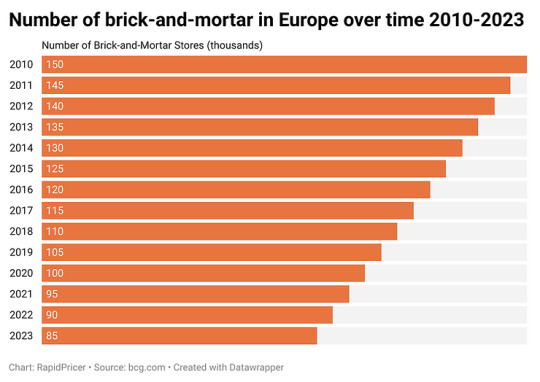
Figure: Number of brick-and-mortar in Europe over time

Figure: Department stores
Department stores: Department stores are large stores that sell a variety of products, such as clothing, home goods, and electronics. Some of the most famous department stores in Europe include Galeries Lafayette in Paris, Selfridges in London, and El Corte Inglés in Madrid.

Figure: Independent retailers
Independent retailers: Independent retailers are small, privately owned businesses that sell a variety of products. These retailers often have a strong local presence and offer a unique shopping experience.
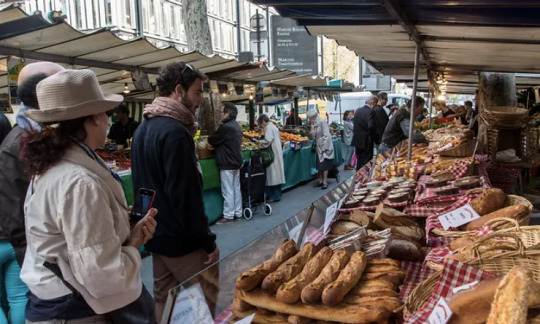
Figure: Markets
Markets: Markets are a great place to find fresh produce, meats, cheeses, and other local products. Many European cities have traditional markets that have been operating for centuries.

Figure: Outlet
Outlet malls: Outlet malls are a great place to find discounted name-brand clothing, shoes, and accessories. These malls are often located in tourist destinations.
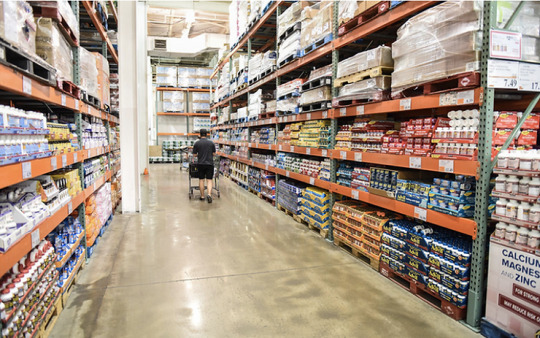
Figure: Warehouse clubs
Warehouse clubs: Warehouse clubs are membership-only stores that sell a variety of products in bulk. These clubs are a great place to find discounts on groceries, household goods, and other items.
Traditional retail is still a major part of the retail landscape in Europe, and it is likely to remain so for the foreseeable future. These stores offer a unique shopping experience that cannot be replicated online. In addition, many traditional retailers are adapting to the changing retail landscape by investing in their online presence and offering omnichannel shopping experiences.
The European Retail Landscape
Europe boasts a diverse and rich retail heritage, with traditional shops, boutiques, and markets dating back centuries. These establishments have played a significant role in local economies, offering consumers a wide range of goods and personalized shopping experiences.
Challenges in the Digital Age: Traditional retail in Europe has felt the impact of the digital age. The rapid growth of e-commerce giants like Amazon, along with the convenience of online shopping, has led to a decline in foot traffic at brick-and-mortar stores. Consumers now have access to a vast array of products with the click of a button, making it essential for traditional retailers to adapt.
The Omnichannel Approach: Many traditional European retailers are responding to the digital challenge by adopting an omnichannel approach. This strategy combines physical stores with an online presence, offering consumers a seamless shopping experience. Retailers are investing in e-commerce websites, mobile apps, and in-store technology to bridge the gap between offline and online shopping.
Customer Experience and Personalization: One advantage traditional retailers have over e-commerce is the ability to provide a unique and personalized customer experience. Many European consumers still value the tactile, sensory experience of shopping in a physical store. Traditional retailers are focusing on creating welcoming and interactive environments, offering personalized service, and curating their product selections to cater to local tastes.
Sustainability and Localism: In response to consumer demand for sustainability and ethical shopping, traditional European retailers are emphasizing their commitment to local sourcing and environmentally friendly practices. Some are rediscovering the benefits of locally-produced goods, promoting them as eco-friendly alternatives to mass-produced items. This aligns with the rising trend of supporting local businesses and reducing the carbon footprint associated with global supply chains.
Cultural and Historical Significance: Traditional retail establishments often hold cultural and historical significance in European communities. Many have been in operation for generations, serving as cornerstones of local culture. These stores are cherished by residents and tourists alike, and efforts are made to preserve their historical authenticity while integrating modern retail practices.
Government Support: Some European governments recognize the importance of preserving traditional retail and are offering support through grants, subsidies, and regulatory measures. These initiatives aim to bolster traditional retail against the encroachment of e-commerce and maintain the vibrancy of city centers.
Conclusion
Traditional retail in Europe is at a crossroads. While it faces challenges from the digital age and changing consumer preferences, it also has unique advantages rooted in history, culture, and personalized shopping experiences. To thrive in today's retail landscape, traditional retailers must embrace technology, adopt an omnichannel approach, focus on customer experience, and align with sustainability and localism trends. In doing so, traditional European retail can not only survive but also continue to offer consumers a distinctive and cherished shopping experience that reflects the rich tapestry of Europe's retail heritage. By adapting to the evolving market while preserving their unique qualities, traditional retailers can continue to play a vital role in the continent's commercial landscape.
The changing demographics of consumers
The demographics of European consumers are also changing, which is having an impact on the retail landscape. The population is aging, with more people over the age of 65. This group is increasingly active and affluent, and they are looking for different products and services than younger consumers. They are also more likely to shop online.
Another demographic trend is the increasing diversity of the European population. This is leading to a demand for more ethnic food and clothing stores. Retailers are also adapting their marketing and advertising to reach these new customer groups.
Here are some specific examples of how the changing demographics of consumers are impacting the retail industry in Europe:
The aging population is leading to a demand for more accessible and convenient shopping options. This is driving the growth of online grocery delivery and click-and-collect services.
The increasing diversity of the population is leading to a demand for more ethnic food and clothing stores. This is also leading to a demand for products and services that cater to the needs of diverse cultures, such as halal food and bilingual customer service.
The rise of the digital native is leading to a demand for more personalized and engaging shopping experiences. This is driving the growth of mobile commerce and augmented reality (AR) shopping.
The changing role of women is leading to a demand for more flexible shopping hours and options for online shopping. This is also leading to a demand for more products and services that are designed for women, such as maternity clothing and baby products.
The growing importance of sustainability is leading to a demand for more sustainable products and services. This is driving the growth of organic food, fair trade clothing, and recycled packaging.
The increasing adoption of new technologies
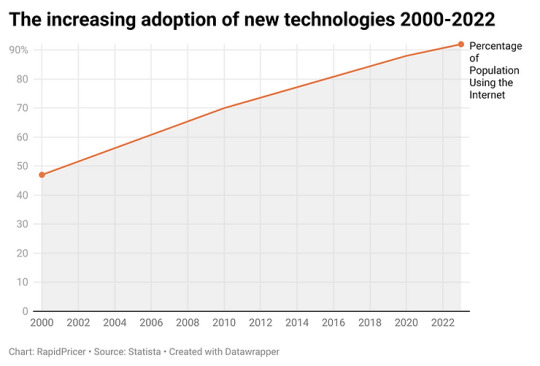
Figure: The increasing adoption of new technologies
As you can see, the percentage of people in Europe using the internet has been increasing steadily over the past two decades. This is due to a number of factors, including the increasing availability of high-speed internet, the falling cost of computers and smartphones, and the growing popularity of online services.
The increasing adoption of new technologies is having a major impact on the retail industry in Europe. Here are some of the key technologies that are being adopted by retailers in Europe:
Artificial intelligence (AI): AI is being used to improve a variety of tasks in the retail industry, such as customer service, inventory management, and fraud detection. For example, AI can be used to analyze customer data to personalize recommendations, or to predict which products are likely to be in high demand.
Augmented reality (AR): AR is being used to create immersive shopping experiences that allow customers to try on clothes virtually or see how furniture would look in their home. For example, IKEA has an AR app that allows customers to see how its furniture would look in their living room.
Virtual reality (VR): VR is being used to create even more immersive shopping experiences that allow customers to virtually visit stores and try on products. For example, Amazon has a VR store that allows customers to browse its products and make purchases.
Internet of Things (IoT): IoT is being used to connect devices and collect data about customer behavior. This data can be used to improve a variety of tasks, such as inventory management and customer service. For example, retailers can use IoT sensors to track the movement of products in stores and to identify when products are running low.
Blockchain: Blockchain is being used to create secure and transparent supply chains. This can help retailers to ensure the authenticity of their products and to track their products from the source to the customer. For example, Walmart is using blockchain to track the supply chain of its food products.
These are just some of the key technologies that are being adopted by retailers in Europe. The adoption of these technologies is helping retailers to improve their efficiency, personalize the customer experience, and create a more sustainable supply chain.
E-Commerce Dominance
One of the most profound shifts in European retail has been the rise of e-commerce. Consumers now have the convenience of shopping online from the comfort of their homes, and this trend has been accelerated by the COVID-19 pandemic. Major players like Amazon, Alibaba, and local champions such as Zalando and ASOS have expanded their reach across Europe, reshaping consumer behavior and expectations. Retailers have had to invest heavily in their online presence, enhancing websites, mobile apps, and supply chain logistics to meet the demand for digital shopping. Additionally, omnichannel strategies have become essential, allowing consumers to seamlessly switch between online and offline shopping experiences.
E-commerce dominance refers to the growing market share of online retailers over traditional brick-and-mortar stores. This trend is being driven by a number of factors, including the increasing availability of high-speed internet, the growing popularity of mobile shopping, and the convenience of online shopping. In Europe, e-commerce sales are expected to reach €768 billion in 2022, accounting for 16.1% of total retail sales. This growth is being driven by the increasing adoption of online shopping by consumers across all demographics.
There are a number of reasons why e-commerce is becoming so dominant. First, the availability of high-speed internet has made it possible for consumers to shop online quickly and easily. Second, the popularity of mobile shopping has made it possible for consumers to shop online from anywhere. Third, the convenience of online shopping is unmatched by traditional brick-and-mortar stores. Consumers can shop online 24/7, compare prices from different retailers, and have products delivered to their door. The rise of e-commerce is having a major impact on the retail industry. Traditional brick-and-mortar stores are facing increasing competition from online retailers, and many are struggling to compete. In order to survive, traditional retailers need to adapt to the changing retail landscape by investing in their online presence and offering omnichannel shopping experiences.

Figure: Share of online retail sales in Europe over time
As you can see, the share of online retail sales in Europe has been increasing steadily in recent years. This is due to the increasing popularity of online shopping, which is more convenient and offers a wider selection of products. The share of online retail sales is expected to continue to increase in the coming years. However, it is important to note that not all countries are affected equally. For example, the share of online retail sales is higher in Northern Europe than in Southern Europe. The future of online retail in Europe is bright. The growth of online shopping is being driven by a number of factors, including the increasing availability of high-speed internet, the growing popularity of smartphones and tablets, and the increasing convenience of online shopping.
Sustainability and Ethical Consumption
The European retail landscape is witnessing a significant shift towards sustainability and ethical consumption. Consumers are becoming increasingly aware of the environmental and social impact of their purchases. Retailers are responding by adopting eco-friendly practices, sourcing sustainable products, and promoting transparency in their supply chains.
Fashion brands, in particular, have made strides in sustainable fashion, with initiatives like "slow fashion" and clothing rental services gaining popularity. European consumers are favoring products that are produced responsibly and have a lower environmental footprint, and retailers are aligning their strategies with these values.
Personalization and Data Analytics
Data analytics and artificial intelligence are playing a crucial role in the transformation of European retail. Retailers are harnessing the power of big data to gain insights into consumer behavior, preferences, and shopping habits. This data-driven approach allows them to personalize marketing efforts, optimize inventory management, and enhance the overall shopping experience.
Personalized recommendations, targeted advertising, and tailored promotions are becoming the norm in the industry. Retailers are using predictive analytics to forecast trends and adjust their product offerings accordingly, ensuring they stay ahead of consumer demands.
Pop-Up Stores and Experiential Retail
While online shopping continues to grow, physical stores are not becoming obsolete. Instead, retailers are reimagining the in-store experience to attract and engage customers. Pop-up stores and experiential retail spaces are gaining popularity, offering unique and immersive experiences that cannot be replicated online.
These temporary stores allow retailers to test new products and connect with customers on a more personal level. They often incorporate interactive elements, such as virtual reality experiences or live demonstrations, to create memorable moments for shoppers.
Cross-Border Expansion
European retailers are increasingly looking beyond their home markets for growth opportunities. Cross-border expansion has become a viable strategy for many companies seeking to tap into new customer bases and diversify revenue streams. The European Union's single market has facilitated this expansion by reducing trade barriers and harmonizing regulations.
Furthermore, technology has made it easier for retailers to reach international customers through e-commerce platforms and digital marketing. As a result, many European brands are expanding their presence into neighboring countries and even outside of Europe, creating a more competitive and globalized retail landscape.
Post COVID European Retail
The retail industry in Europe is undergoing a period of change after COVID. The pandemic has accelerated the shift to online shopping, and brick-and-mortar stores are struggling to compete. Retailers are responding by adopting new technologies, such as AR and VR, and by offering more convenient shopping experiences, such as BOPIS. The industry is also focusing on sustainability, as consumers are increasingly demanding sustainable products and services.
Conclusion
The changing landscape of European retail is characterized by the rapid growth of e-commerce, a focus on sustainability and ethical consumption, data-driven personalization, experiential in-store experiences, and cross-border expansion. Retailers that adapt to these trends and embrace digital transformation are likely to thrive in this dynamic environment.
The future of European retail will continue to be shaped by evolving consumer preferences and technological innovations. To stay relevant, retailers must remain agile, customer-centric, and committed to ethical and sustainable practices. As the industry continues to evolve, it will be exciting to see how retailers innovate and compete in this ever-changing landscape.
About RapidPricer
RapidPricer helps automate pricing, promotions and assortment for retailers. The company has capabilities in retail pricing, artificial intelligence and deep learning to compute merchandising actions for real-time execution in a retail environment.
Contact info:
Website: https://www.rapidpricer.com/
LinkedIn: https://www.linkedin.com/company/rapidpricer/
Email: [email protected]
#European Retail Industry#Retail Trends in Europe#E-commerce Growth#Brick-and-Mortar Stores#Omnichannel Retailing#Digital Transformation#Consumer Behavior#Sustainability in Retail#Retail Technology#Online Marketplaces#Supply Chain Disruptions#Post-Pandemic Retail#Retail Innovation#Mobile Shopping#Data Analytics in Retail#Cross-Border Shopping#Pop-Up Stores#Customer Experience#Retail Competition#Retailer Partnerships#Retail Regulations#Future of Retail in Europe#Retail Challenges#Local vs. Global Retailers#Retail Adaptation Strategies
0 notes
Text
Level Up Your Brand: How Digital Marketing Agencies Can Win with Micro-Influencers

The influencer marketing landscape is constantly evolving. While mega-influencers with millions of followers still hold sway, there’s a growing trend towards collaborating with micro-influencers. These individuals, boasting follower counts in the thousands (sometimes even hundreds), generate a buzz for brands and businesses.
Here’s why online marketplaces and digital marketing agencies should be incorporating micro-influencers into their strategies:
1. Authenticity and Trust
Micro-influencers are often more relatable and down-to-earth compared to their high-profile counterparts. They tend to have a more authentic connection with their audience, fostering a sense of trust and loyalty. This authenticity translates into higher engagement rates, with followers genuinely interested in the products or services being promoted.
2. Targeted Reach
Micro-influencers typically focus on specific niches: fashion, travel, fitness, or pet care. This allows for targeted outreach, reaching a highly engaged audience that’s genuinely interested in the brand’s offerings. Digital marketing agencies can leverage online marketplaces to find micro-influencers whose niche perfectly aligns with the client’s target demographic.
3. Cost-Effectiveness
Partnering with micro-influencers is often more cost-effective compared to mega-influencers. This opens doors for smaller businesses and startups to participate in influencer marketing campaigns. Online marketplaces provide a platform for brands to connect with micro-influencers directly, negotiating rates and campaign details.
4. Measurable Results
The smaller, more engaged audience of micro-influencers allows for easier measurement of campaign results. Engagement metrics like likes, comments, and click-through rates become more meaningful, providing valuable insights into the campaign’s effectiveness. Digital marketing agencies can use this data to refine future campaigns and maximize ROI.

Several online marketplaces cater specifically to influencer marketing, connecting brands with micro-influencers across various platforms like Instagram, YouTube, and TikTok. These platforms offer features like:
Influencer Discovery: Search for micro-influencers based on demographics, niche, and follower engagement.
Campaign Management: Tools to manage communication, negotiate contracts, and track campaign performance.
Analytics and Reporting: Access to reach, engagement, and brand mention data.
The Role of Digital Marketing Agencies
Digital marketing agencies can be crucial in integrating micro-influencers into a brand’s overall marketing strategy. Their expertise lies in:
Campaign Development: Develop targeted influencer marketing campaigns that align with the brand’s goals and target audience.
Influencer Selection: Utilizing online marketplaces and their own expertise to identify the most suitable micro-influencers for the campaign.
Content Creation: Collaborating with micro-influencers to develop engaging and authentic content that resonates with their audience.
Campaign Management: Managing the campaign logistics, including communication, budget allocation, and performance tracking.
Conclusion
Micro-influencers are a powerful force in today’s marketing landscape. By leveraging online marketplaces and partnering with digital marketing agencies, brands can harness micro-influencers power to reach targeted audiences, build brand loyalty, and achieve measurable results. So, are you ready to join the micro-influencer revolution?
0 notes
Text
Creating an effective pricing strategy is crucial for success in online marketplaces. It's a delicate balance between maximizing profits and attracting customers in a highly competitive environment.
0 notes
Text
The Bazee.com Legal Battle: Intermediary Liability, Online Platforms, and Free Speech
The Bazee.com Controversy: Avnish Bajaj’s Arrest and the Freedom of Online Marketplaces
In the early 2000s, the world witnessed the rapid growth of e-commerce and online marketplaces. One such platform, Bazee.com, later known as eBay.in, became a household name in India. However, the company and its CEO, Avnish Bajaj, found themselves embroiled in a highly controversial legal battle that raised…

View On WordPress
#Avnish Bajaj#Bazee.com#content moderation#E-commerce#eBay.in#Free Speech#India#Indian Penal Code#Information Technology Act#intermediaries#intermediary liability#legal battle#Liability#obscenity#online marketplace#Online Marketplaces#Supreme Court#user-generated listings
1 note
·
View note
Text
Budget-Friendly Art: Enhancing Airbnb Interiors on a Shoestring

View On WordPress
#affordable artwork#budget decor#budget-friendly art#local art students#nature-inspired art#online marketplaces#printable art#repurposed art#shoestring budget#upcycled art#vintage postcards
0 notes